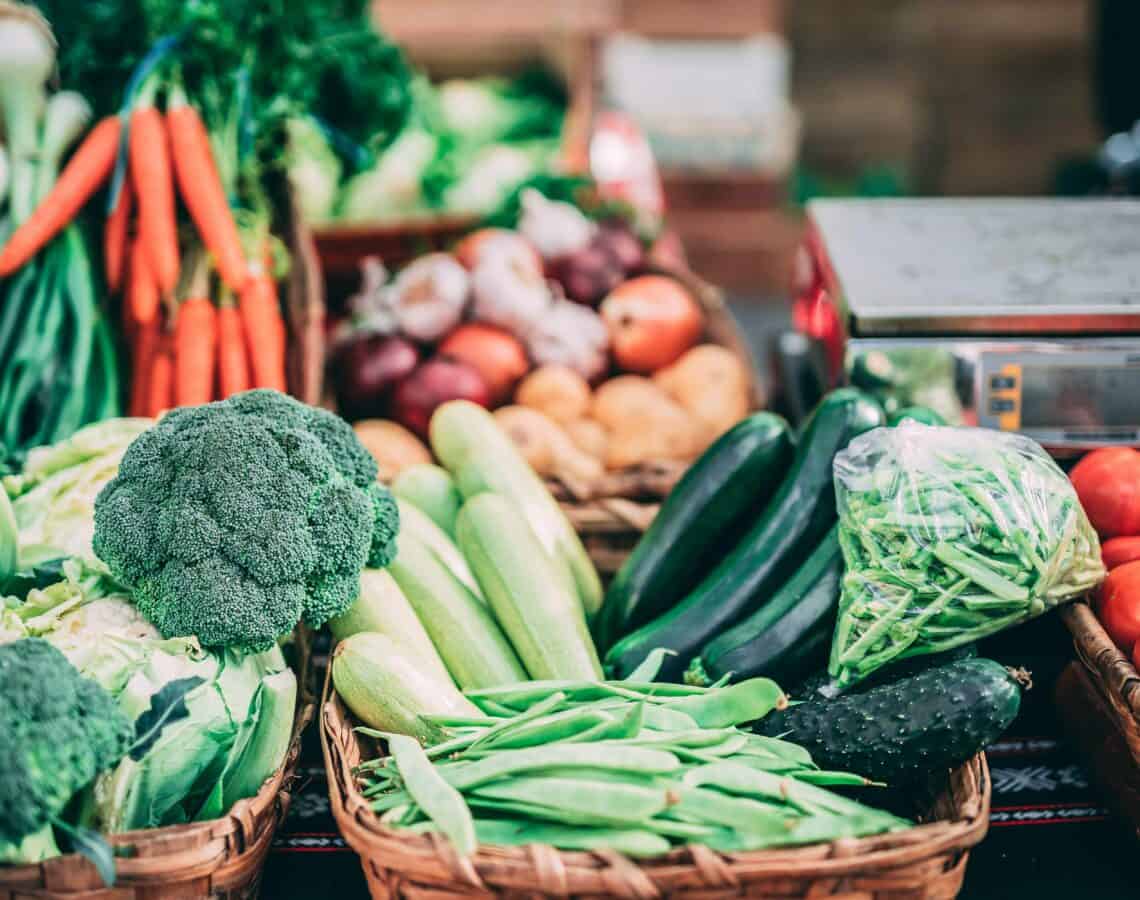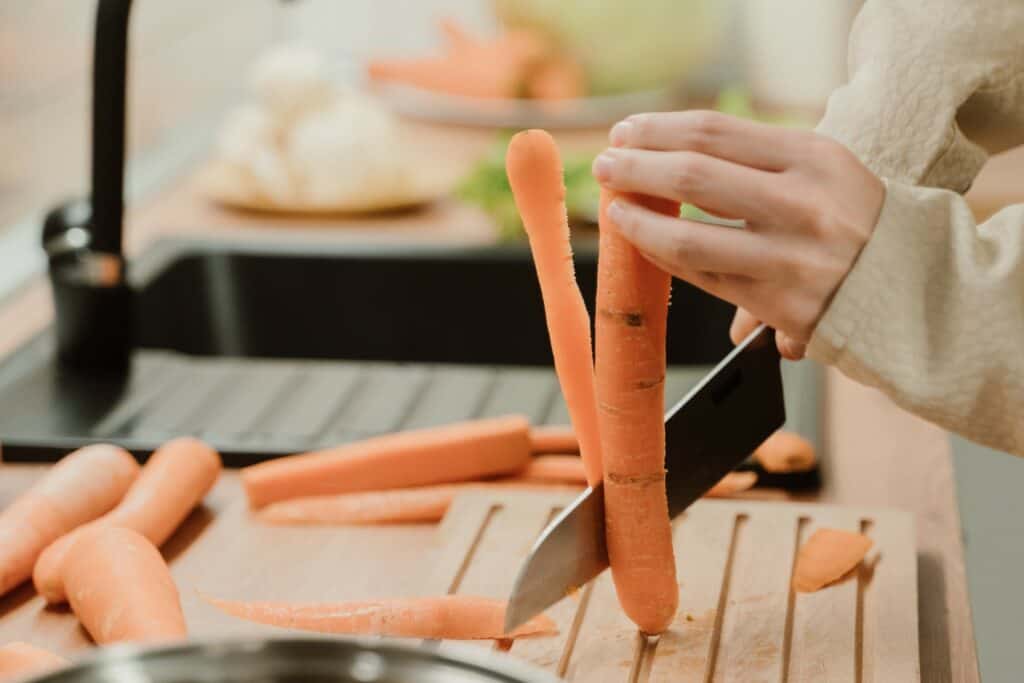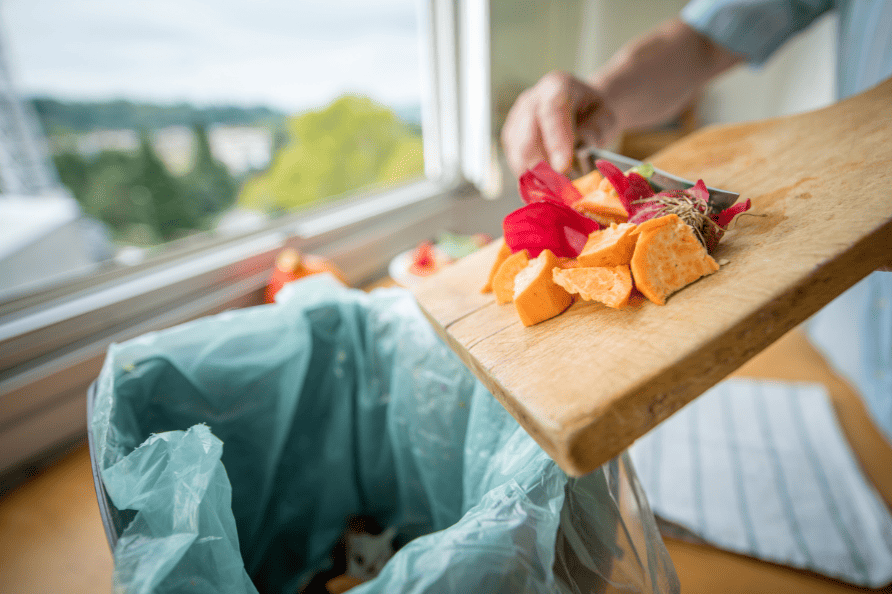How to make the most of vegetables

Vegetables are such a crucial part of our diet, and sadly only 8% of Queensland adults and 5% of children are eating the recommended 5+ serves of vegetables each day![1]. According to the National Health and Medical Research Council eating the recommended 5 serves of veg a day can reduce risk of developing coronary heart disease, stroke, weight gain and some cancers; not to mention improve your gut health and simply make you feel good. Vegetables provide our bodies with a great source of dietary fibre (including soluble and insoluble fibre, as well we resistant starch) that is important for helping us feel fuller for longer and achieve good gut health[2].
If Queenslanders increased their veg intake by 1 serve (i.e., ½ cup cooked veg) a day we could see a reduction in the risk of death from all causes by 5% and deaths from heart disease and stoke by 4%[3].
Whilst the many health benefits of getting more veg into your day are known, challenges such as cost and waste can get in the way to getting more veg in our baskets.
Using more of the vegetables you buy and considering imperfect veg are great ways to save money and waste, whilst reaping the health rewards veg has to offer.
Use the whole vegetable
Using every possible part of your veg not only reduces waste (saving our environment from greenhouse gas emissions), but also gives your meals more flavour and nutrients. Whether you consume the root, stem, peel or flesh, veg are nutritious and delicious from top to bottom. The too often removed leaves, peels, skins, stems and stalks of veg provide essential vitamins, minerals and fibre!

Dietary fibre is a key player to improve the overall functioning of our body. Evidence suggests fibre is associated with better regulation of gut motility, body weight, metabolic health including insulin sensitivity, gut microflora, chronic inflammation, depression, cardiovascular disease, bowel cancer and mortality[4].
Check out chef, pickler and cookbook author Alex Elliott-Howery’s tips below on how you can use the parts of your veg you might normally throw away:
- Keep the leaves, leaves from carrots, beetroot, broccoli, cauliflower and celery are all able to be used in stir-fry’s, soups, salads or curries.
- Don’t peel the skins, save time and keep the skins on your carrots, zucchini, pumpkin, potato.
- Use the stems and stalks, cauliflower and broccoli stems can be cooked as you would other firm vegetables (like carrot).
*The Australia Institute for Food Safety recommends you rinse your vegetables thoroughly with plain running water before use.
Save your vegetables from the bin
Did you know that 70% of our food waste in Australia is edible and households spend between $2,000–$2,500 each year on food that is wasted?[5]

If your vegetables have been sitting on your kitchen bench or in your fridge for too long and have started to soften or wilt, never fear there are ways to save them before they end up in landfill!
- Sautee them to have as a side dish, add them to stir-fry’s, curries, or soups. Check out this yummy veggie hash brown recipe.
- Bake with them, you could opt for the classic ‘no waste’ frittata, roast them, or add them to savoury muffins.
- Chop them up and freeze to cook with later, you’d be surprised how easy it is to chop and freeze vegetables for use later.
- Juice them, juice or add your vegetables to a smoothie recipe to boost the nutrients and flavour. Check out this everything smoothie recipe.
- Make stock, use vegetable scraps as a stock base, such as carrot and celery tops, onion and garlic skin and ends. If not ready to make it straight away, you can freeze them for later. Get a recipe for stock here.
- Pickle them, you could pickle onion, cabbage and even broccoli stem to make a quick pickle, sauerkraut or kimchi. It is well known that pickled foods resulting in fermentation provide many health benefits including antioxidant, antimicrobial, antifungal and anti-inflammatory properties[6].
- Rehydrate them, many vegetables with a stalk or stem, think kale, silverbeet or celery, can be rehydrated by standing them in a glass of water for about 10-15 minutes (or until they stand more upright).
Storing your veg is another really important factor to save your veg from the bin, search the Love Food Hate Waste A-Z food storage guide for some helpful storage tips.
Embrace the imperfect veg
The National Farmers Federation reports that 25% of Aussie farmers’ crops currently never leave the farm gate simply because they do not meet the visual standards of some consumers and supermarkets.
Choosing vegetables which appear imperfect helps to reduce food waste at the farm gate. Reaching for these varieties supports our farmers to make the most of the delicious crops they grow for us to eat, saves you money (these are often marked down in price), and provides all the nutrients vegetables offer.
Look for these uniquely shaped veg often referred to as:
- imperfect,
- odd,
- budget,
- seconds,
- farmers pick, or
- ugly.
You can get imperfect veg from your local supermarket, fruit and vegetable market, or farmers market.
Where to next?
When you are buying or harvesting your veg next don’t forget to use it all and embrace the imperfect veg!
For great vegetable focussed recipe ideas, tips and veggie-cation blogs full of inspiration, head to boostyourhealthy.com.au
Sources:
- [1] Queensland Health. The health of Queenslanders 2020. Report of the Chief Health Officer Queensland. Queensland Government. Brisbane 2020.
- [2] Dietitians Australia. Fibres for your gut: sorting through the roughage, 2022.
- [3] Consumers Health Forum Australia, Eating for Better Health: Report on Health Consumer Survey, 2022.
- [4] Barber et al. The Health Benefits of Dietary Fibre. Nutrients. 2020; 12(10): 3209.
- [5] The State of Queensland. Reduce food waste: food waste facts. Queensland Government, 2022.
- [6] Sanlier et al. Health benefits of fermented foods. Food Science and Nutrition. 2017; 59 (3): 506-527.
- Boost your healthy blog- Reduce your vegetable waste, 2022
- Nutrition Australia- Try for 5, Use it all & Imperfect Veg, 2022.
- Eat for Health: Vegetables and Legumes / Beans. National Health and Medical Research Council 2019.
- No money, no time: What can I do with my fruit and veg when they lose their freshness?
- Australian Farmers: Farmers commit to halving food waste by 2030. National Farmers Federation, 2021.
- Farmers Pick: The ugly issue.


